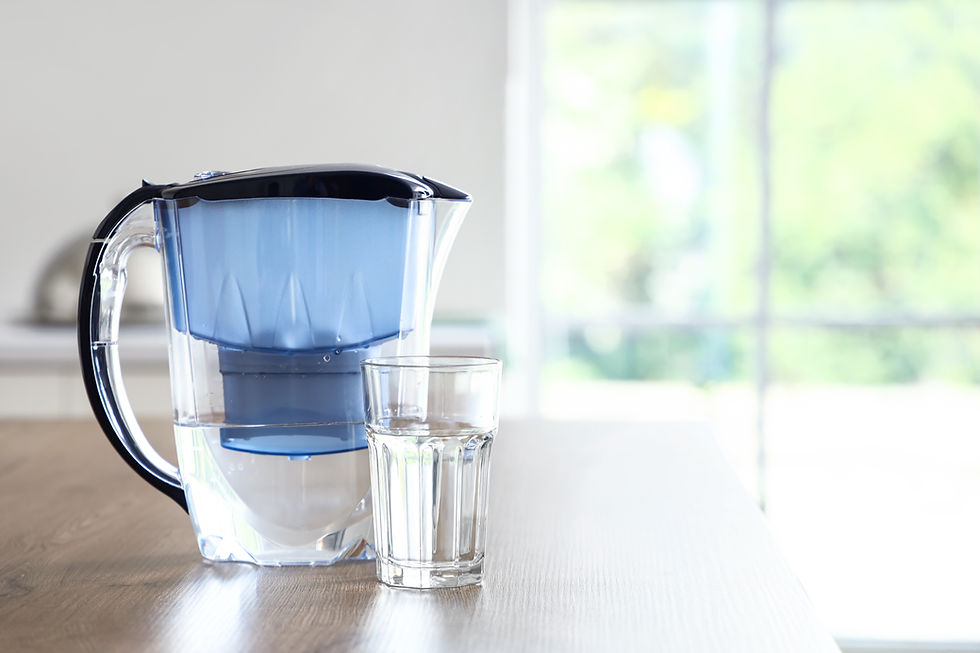PFAS is becoming one of the greatest challenges to clean drinking water
- Holmblad Water
- Oct 17
- 3 min read

Pesticide residues and PFAS are becoming one of the greatest challenges to clean drinking water — now and in the future across Europe
Pesticide residues and PFAS (per- and polyfluorinated substances) are increasingly posing a serious threat to Europe’s drinking water — both today and for generations to come.
The use of pesticides has been rising in several EU countries in recent years, and despite political ambitions to reduce consumption, progress remains too slow. Large quantities of pesticides are still being applied, and authorities across many member states are now reporting the presence of PFAS in groundwater throughout the continent.
Several national studies show that PFAS levels in some boreholes significantly exceed legal limits — in certain cases by several hundred times.
Even if the use of PFAS-containing pesticides and other products is drastically reduced in the coming years, the damage has already been done. PFAS accumulate in the environment and in groundwater, and it may take decades after a full ban before the situation begins to improve. The PFAS detected in groundwater today often originates from use many years ago, meaning it will take a long time before the soil above Europe’s aquifers is free of PFAS and other chemical residues.
How can you avoid PFAS in your drinking water?
In much of the EU, the long-chain types of PFAS are the most commonly found in drinking water — for example, PFNA, PFOS, and PFOA. Paradoxically, this can actually be considered an advantage, as these types are easier to remove through filtration than the more mobile short-chain variants.
The most widely used — and at the same time most cost-effective — method for removing long-chain PFAS from drinking water is coconut-based activated carbon block filtration. Activated carbon blocks made from coconut shells are particularly effective at adsorbing PFAS compounds and can ensure PFAS concentrations well below regulatory limits.
The quality of the carbon block makes a difference
The type and quality of the activated carbon used are crucial for how long the filtration remains effective. Many carbon block cartridges, especially low-cost imported models from Asia, provide strong filtration performance initially but gradually lose efficiency after only 4–6 months. This is often due to lower carbon quality and a smaller amount of active carbon inside the cartridge.
For this reason, it is recommended to use filter cartridges designed in the EU, where quality and testing standards are generally higher. This ensures that the filtration remains effective throughout the cartridge’s lifespan.
Are multi-stage filters better?
A single high-quality activated carbon filter can provide excellent filtration, but a multi-stage setup can deliver even better and more consistent performance over time. When water passes through two activated carbon blocks, the contact time with the carbon is doubled, improving filtration efficiency and extending filter life — especially in areas with high levels of PFAS or other contaminants.
What about ultrafiltration, UV light, and similar technologies?
Technologies such as ultrafiltration and UV light are effective against bacteria like E. coli but have no effect on PFAS compounds. The only practical way to remove PFAS is through activated carbon — or reverse osmosis.
Reverse osmosis – a more advanced solution
Reverse osmosis is the most effective technology for removing all types of PFAS, both long- and short-chain. The process can almost completely purify water from chemical contaminants, but the technology is more complex, more expensive, and requires more maintenance than activated carbon filtration.
For households in areas with severe PFAS contamination, however, reverse osmosis may become the most reliable solution — especially if groundwater quality continues to deteriorate in the coming years.
Conclusion
PFAS and pesticide residues represent a growing challenge for drinking water across Europe. Although the EU is working toward stricter regulations and gradual phase-outs, the consequences of past use will continue to be felt for decades.
Effective filtration solutions — such as activated carbon blocks and reverse osmosis — are therefore becoming essential tools for ensuring clean drinking water for European households, both now and in the future.



Comments